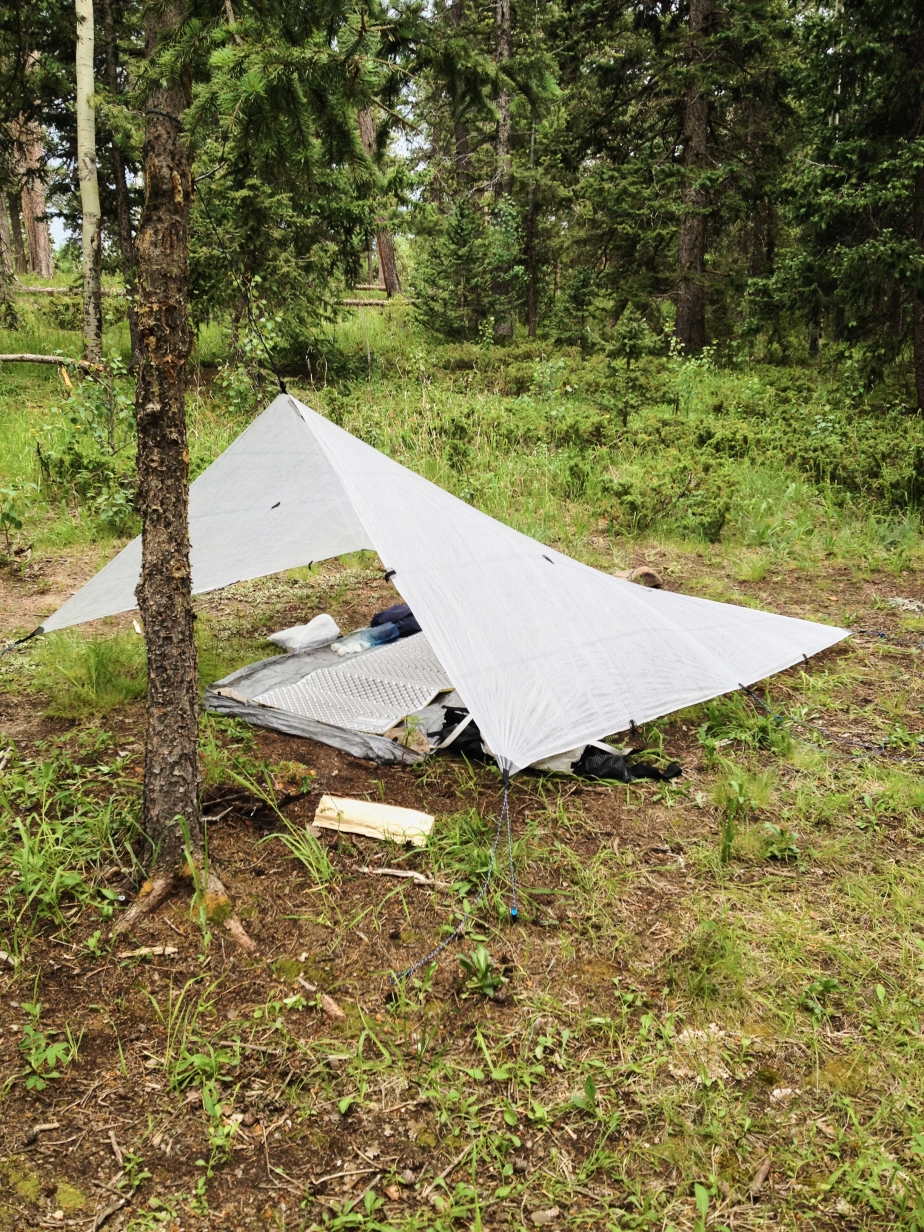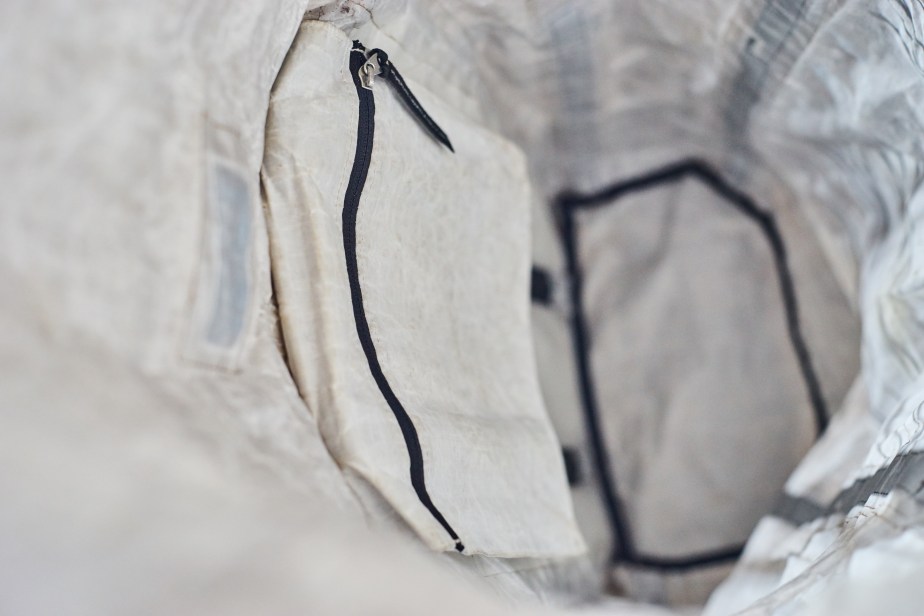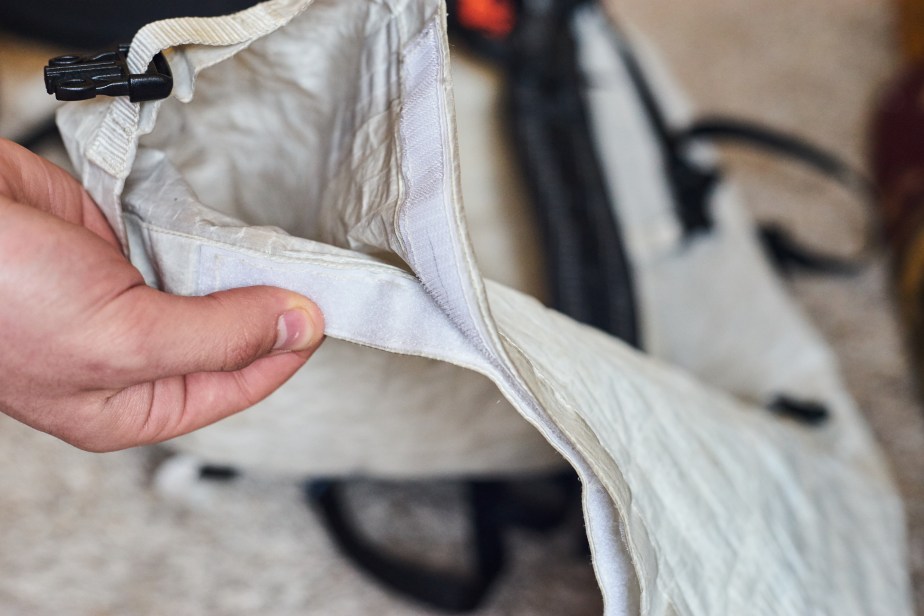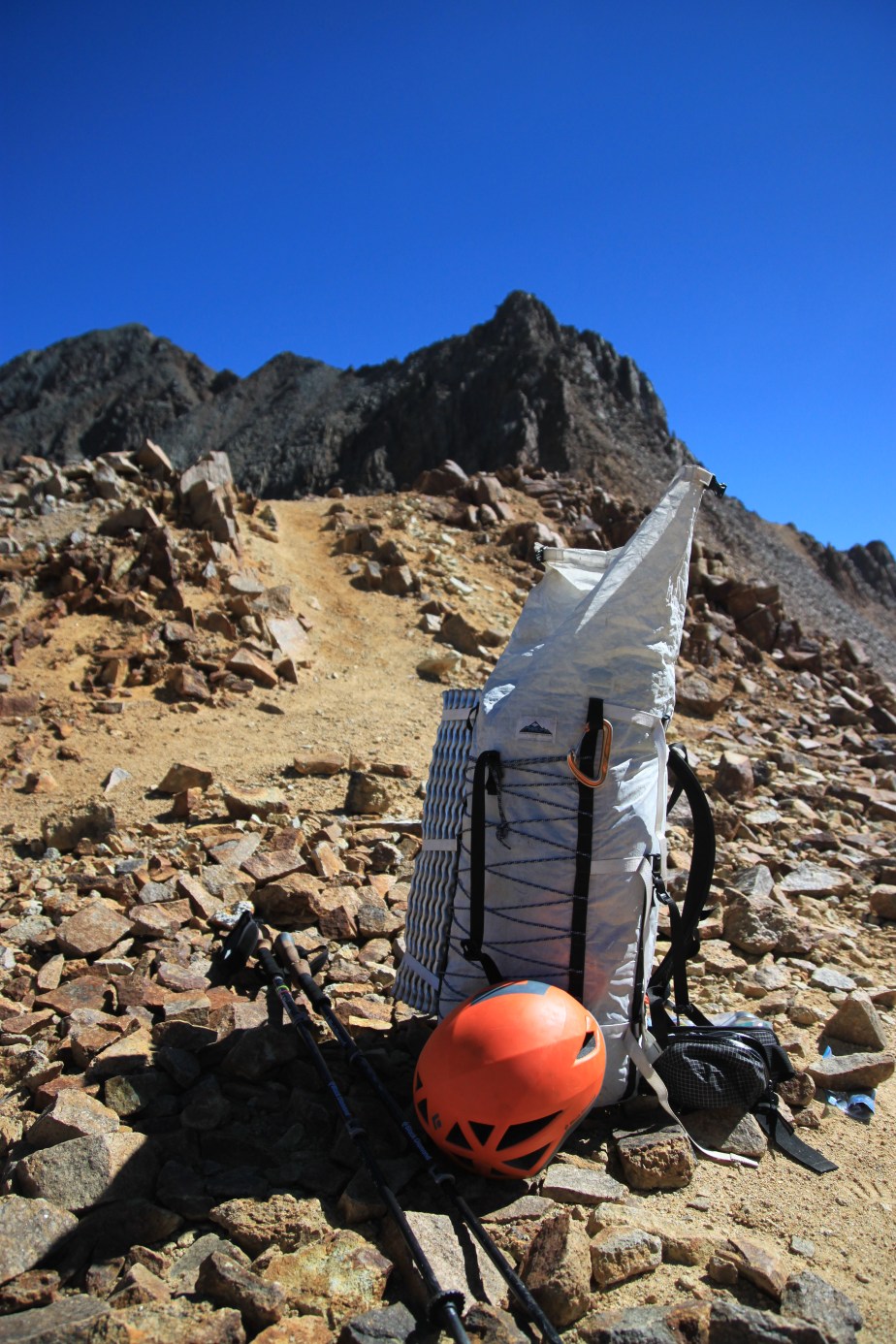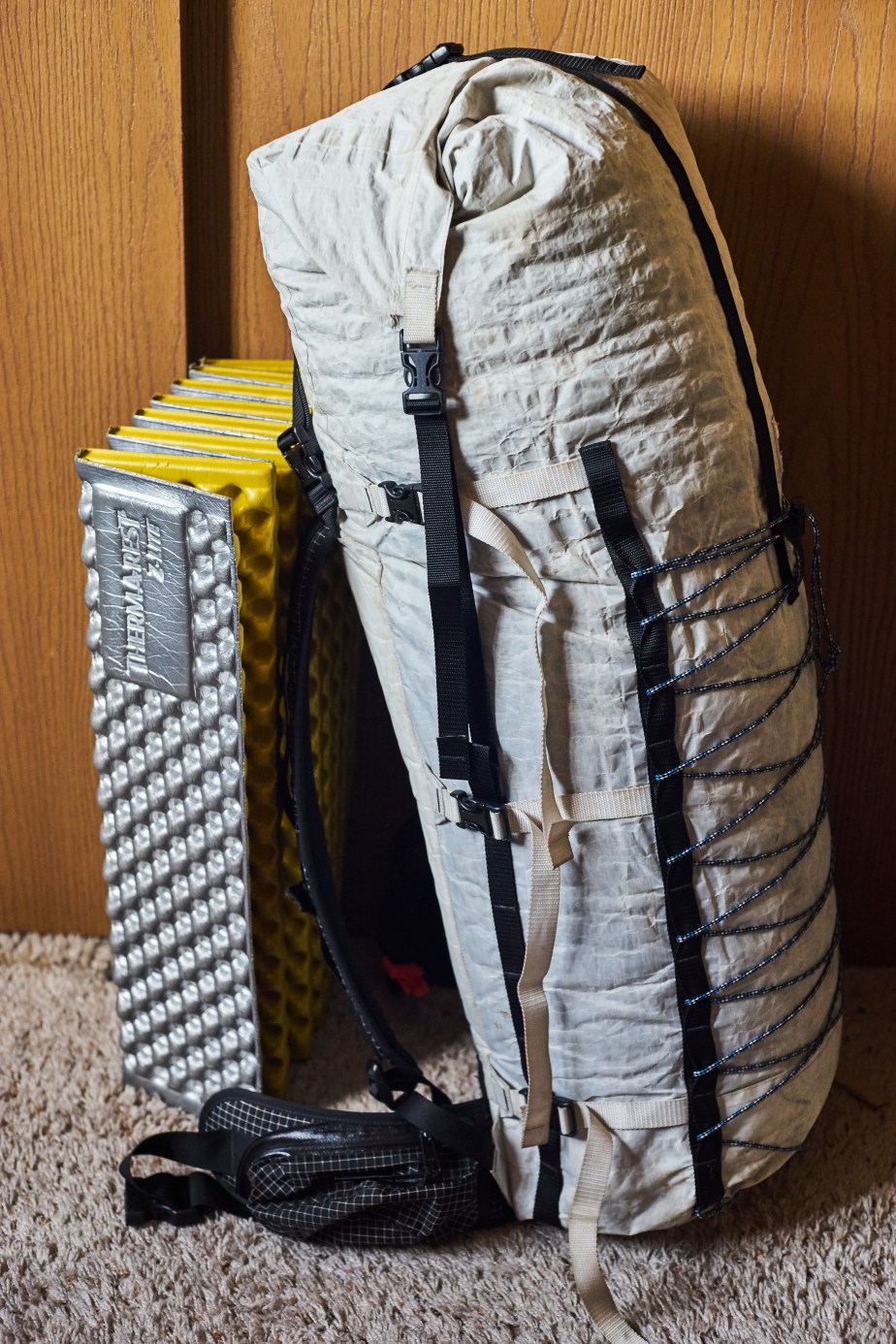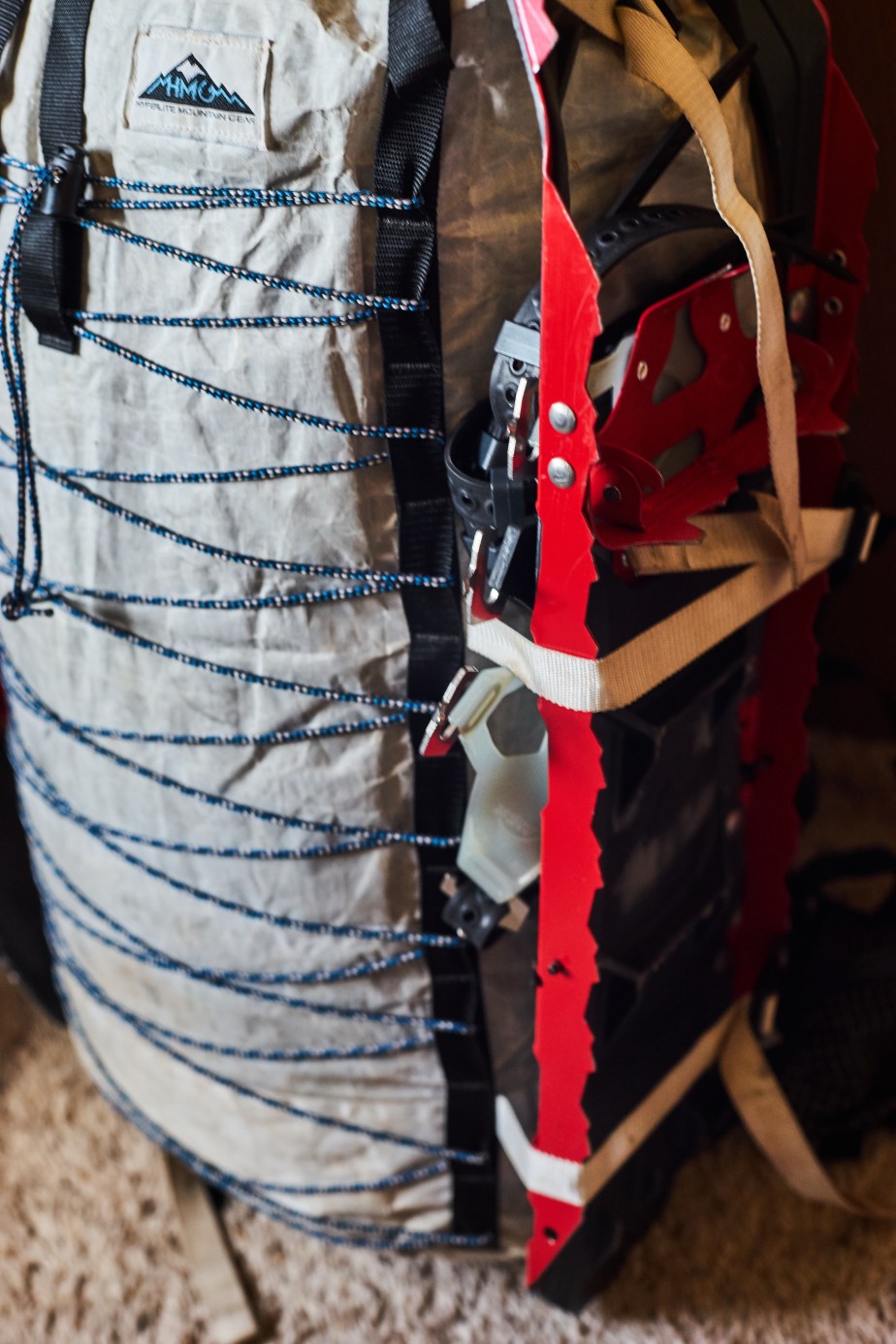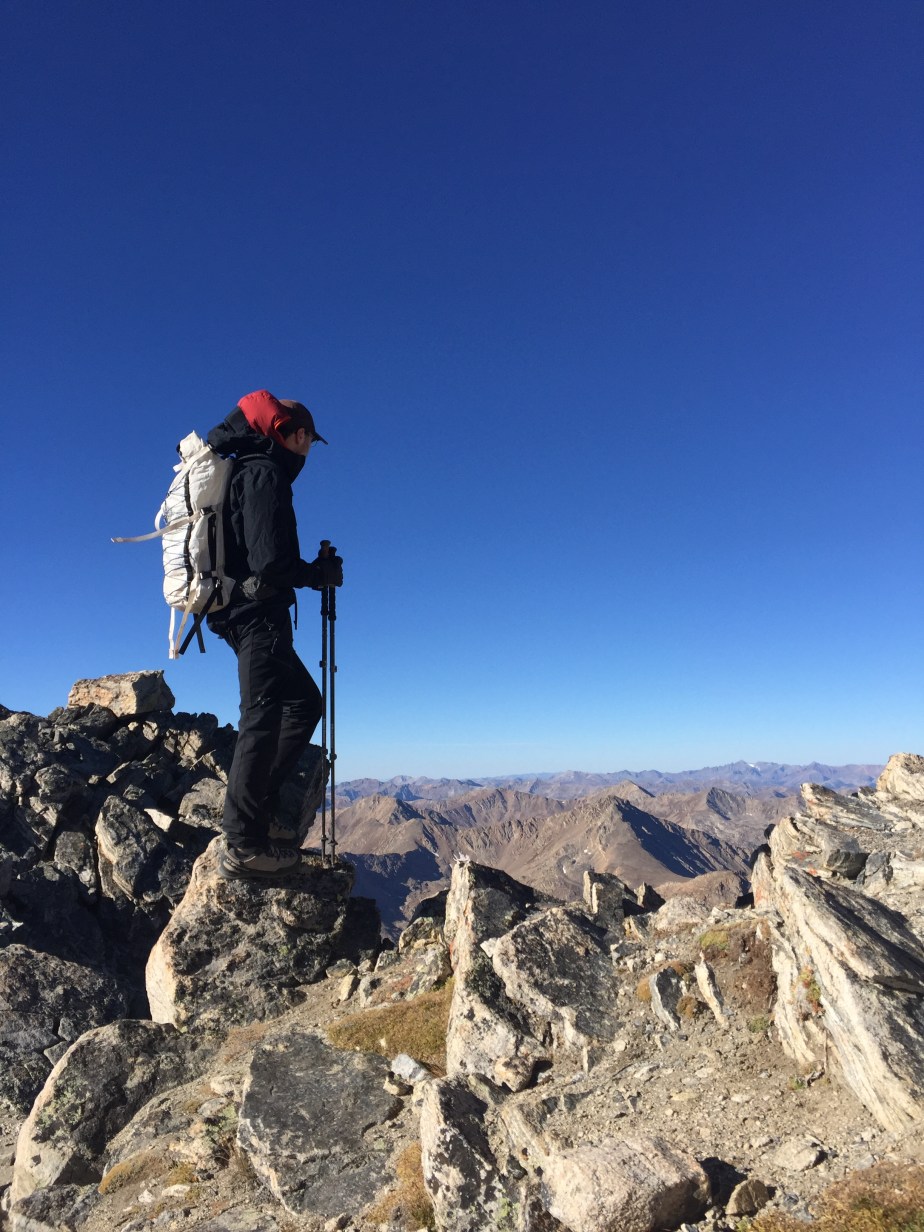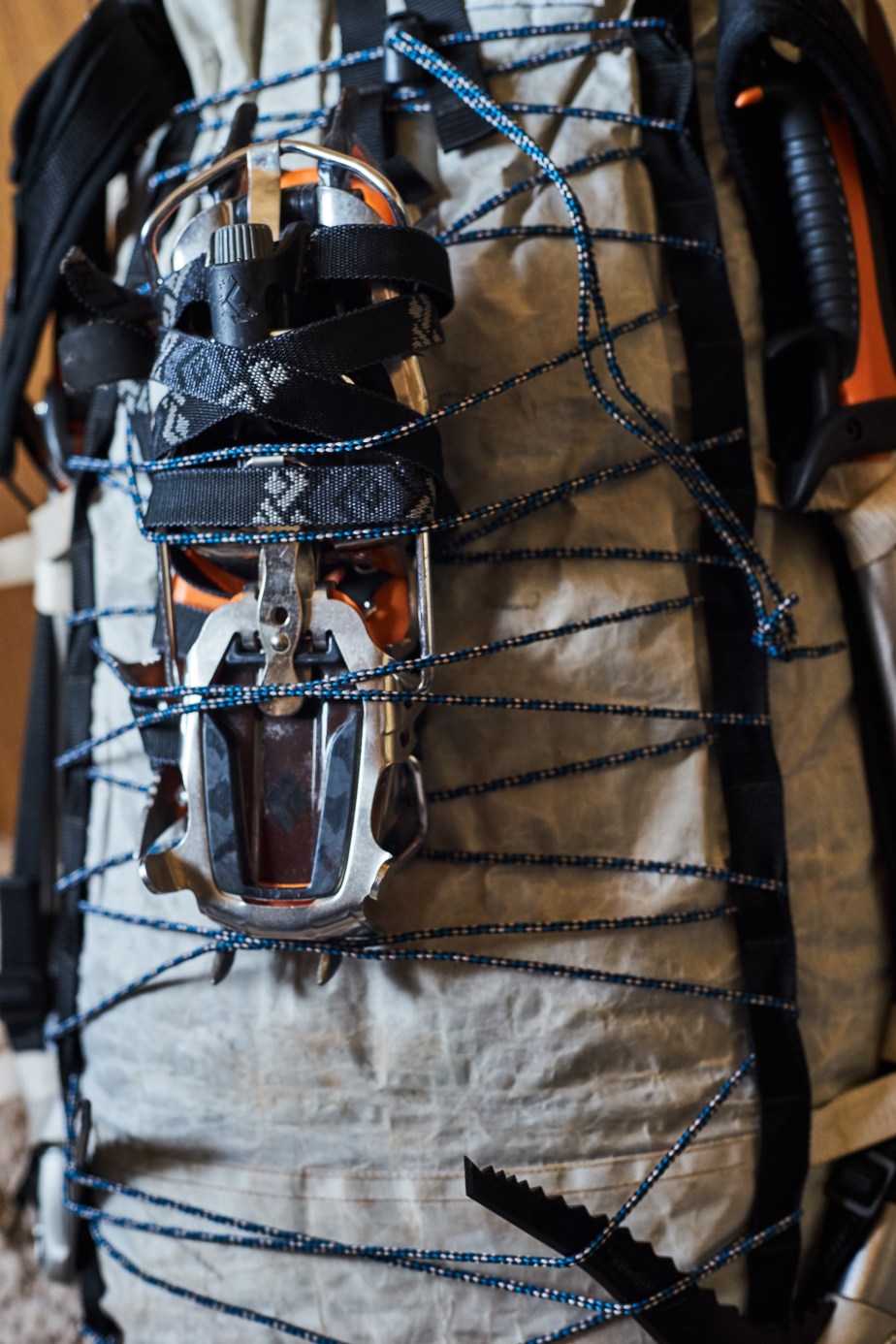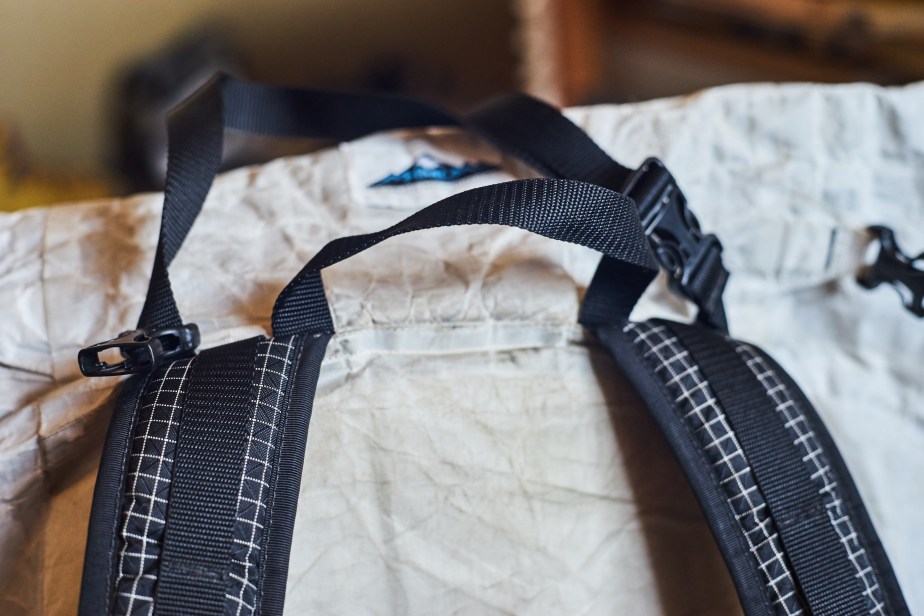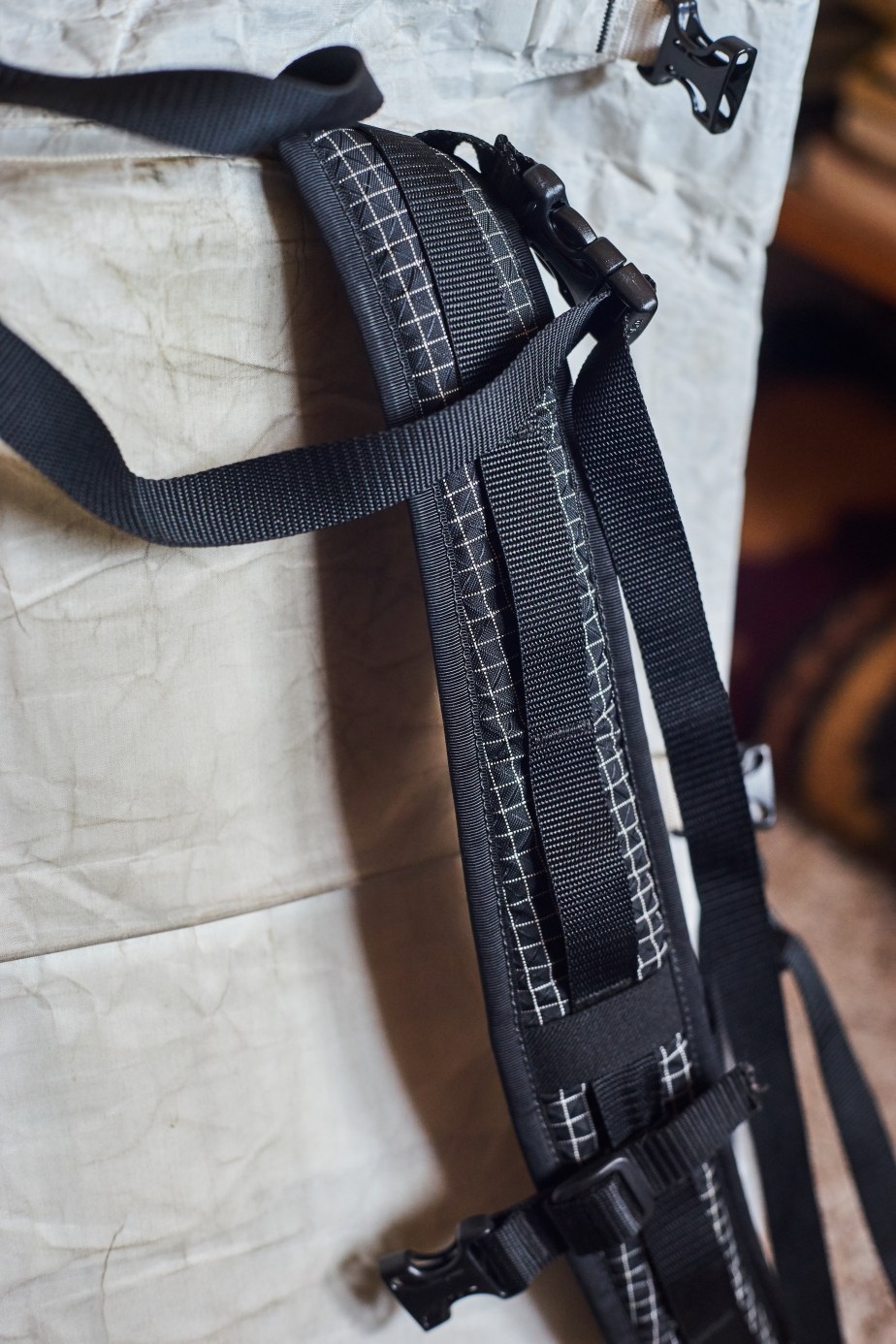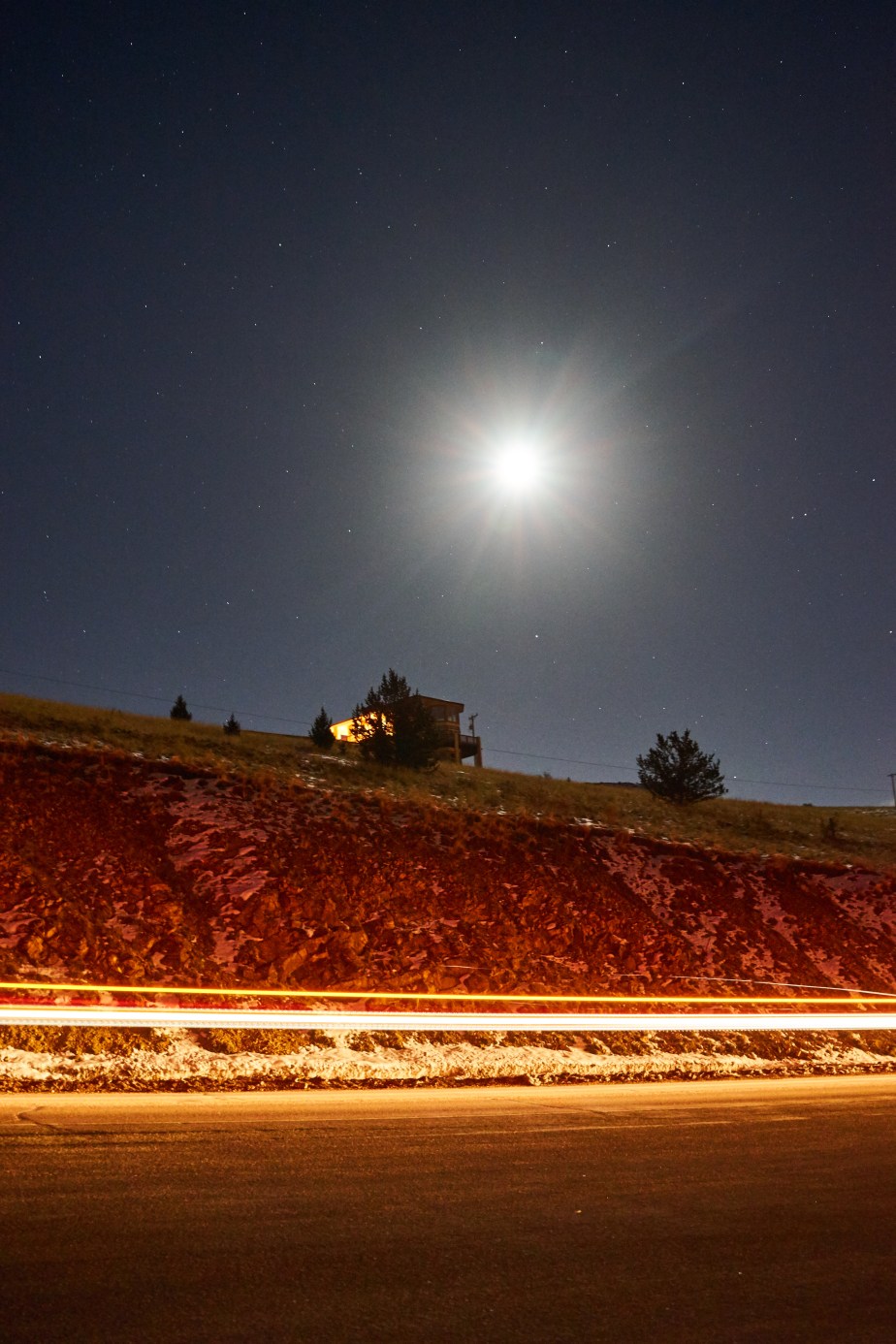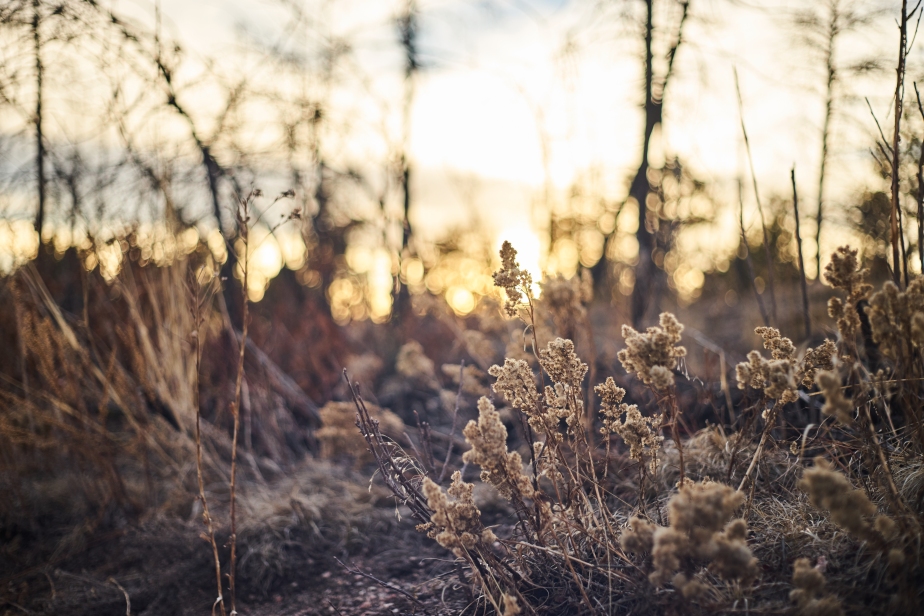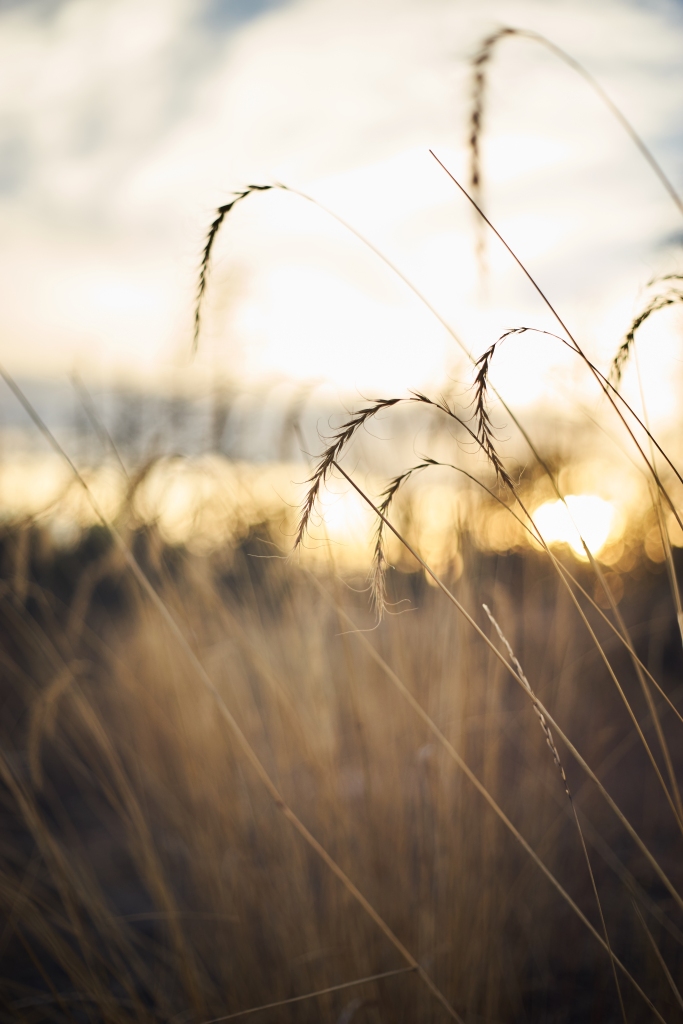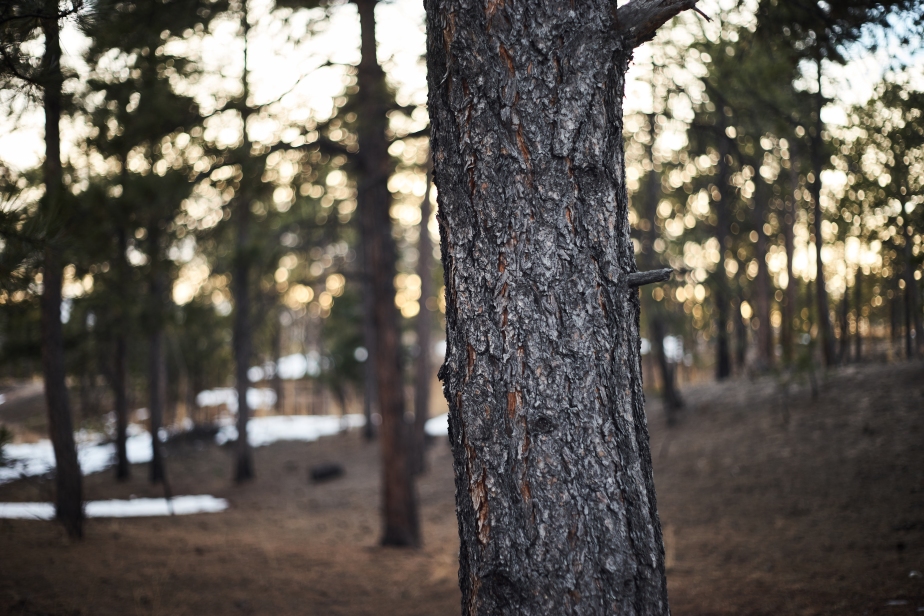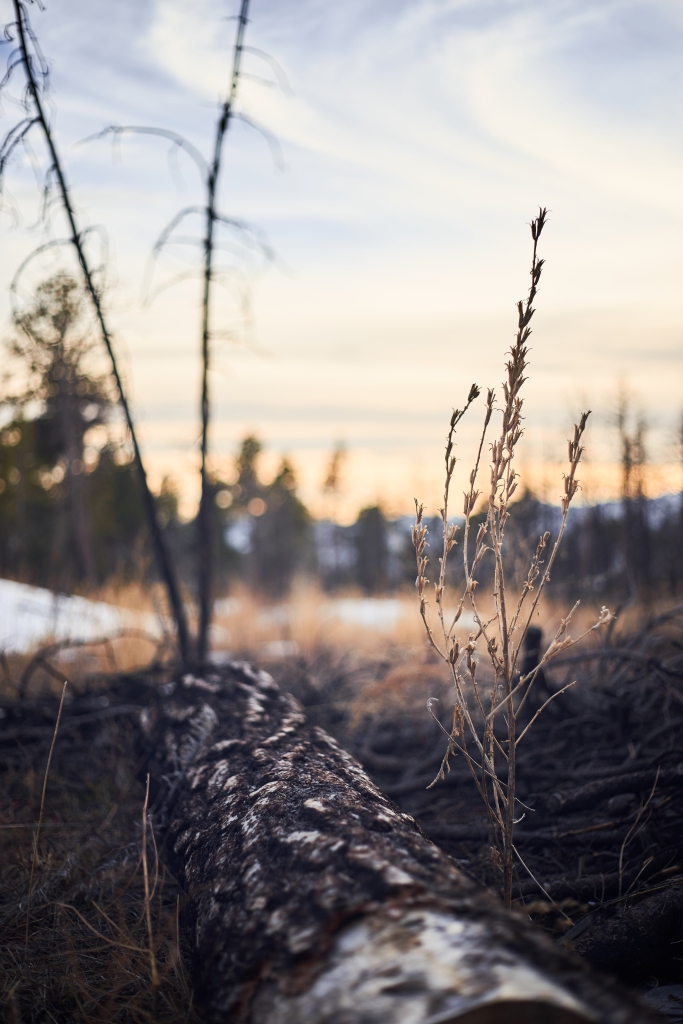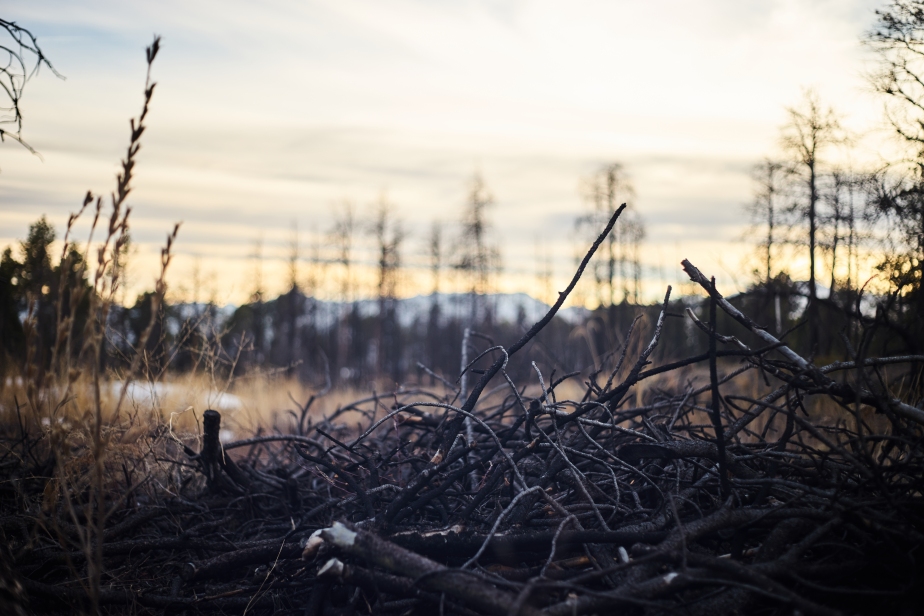The Hyperlite Mountain Gear Flat Tarp 8’6 x 8’6 weighs just over half a pound and is practically the most versatile and durable shelter for purchase.
I have owned this tarp for about two years and while I was concerned at first about the quality and reliability of it, I no longer have any of those concerns. There are definitely lighter options, but for overall durability, cost, speed of production and shipment, and quality, this is the way to go.
The Build
This tarp is made of Dyneema Composite Fabric (cuben fiber). It has one main seam running down the middle of the tarp which is taped. This seam has never leaked or pulled up, however, there is some dirt that has accumulated along the edges. This happens on basically any seam tape, and is just a part of use—it does not affect the weather resistance.
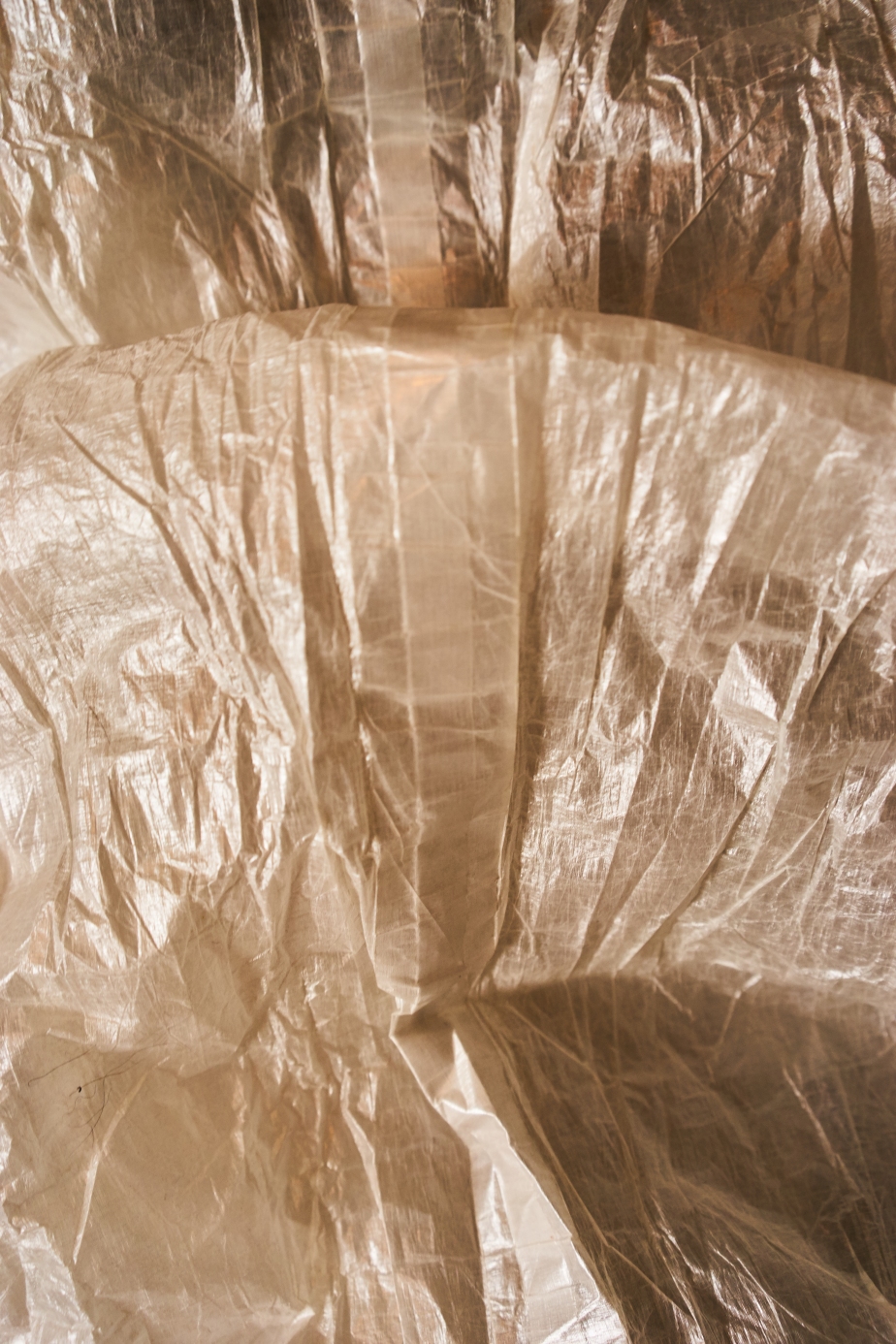
The fabric is not entirely transparent. Opaque is the word I would use. You can change under it and retain your privacy. If you want to. It’s your life. One thing I will say, sunsets and sunrises look beautiful through the white option.
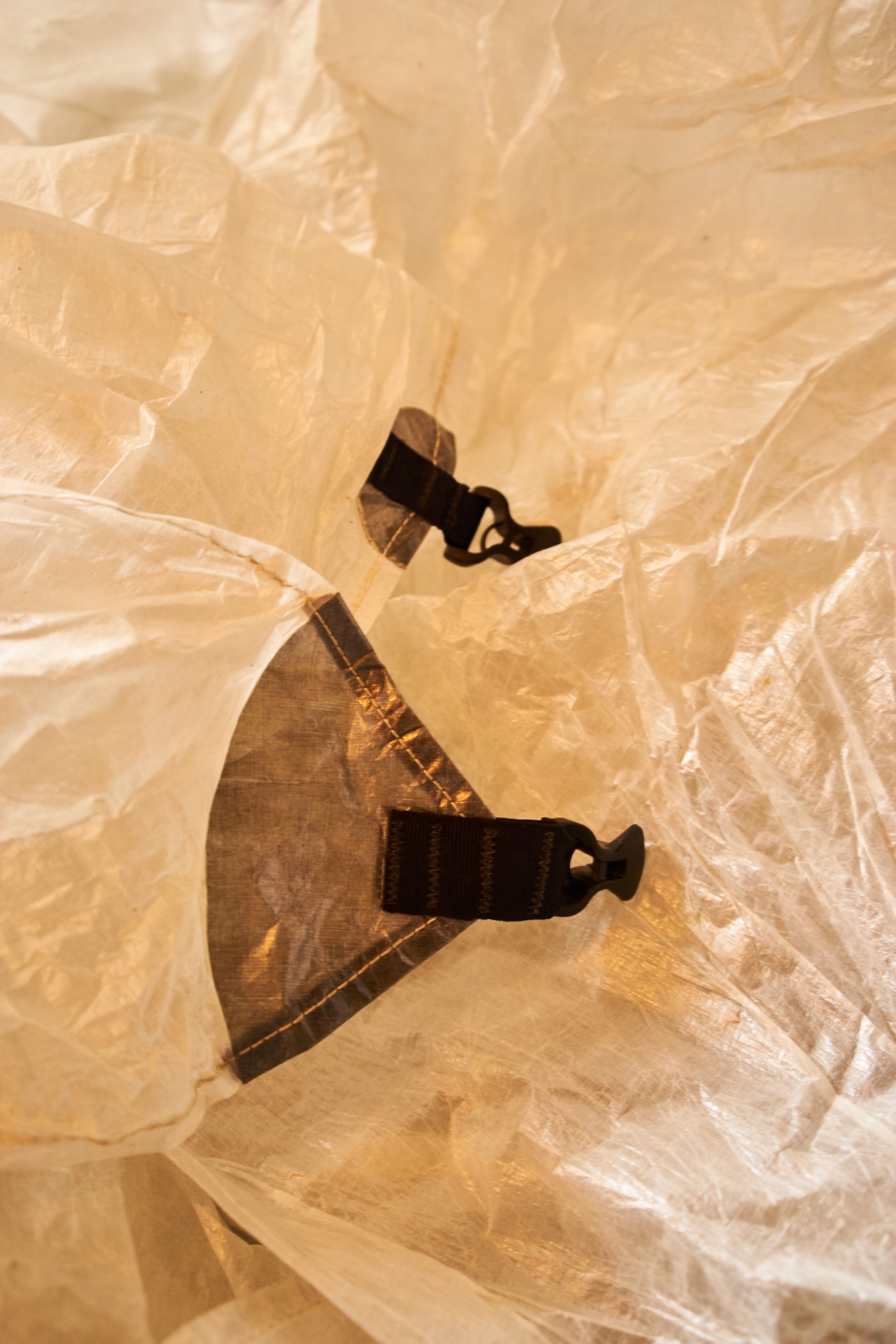
There are five tie-out points on each edge of the tarp, totaling sixteen with the corners included. All of the tie-out points are reenforced with a thicker DCF patch. Also, each corner tie-out and each end of the central seam tie-out points are reenforced with larger DCF patches. Between the tarp and the plastic toggles, there is thin webbing, which is looped.

The toggles for these tie-out points are very simple and keep adequate friction in your line so it remains taught. These are made for 2.8mm line. HMG has mentioned that they have considered smaller diameter toggles, but as for now, 2.8mm seems to be the standard on their products. If you are really, really, really in need of smaller diameter toggles, ZPacks and a few other manufacturers offer them. I don’t think the few grams saved by swapping out the toggles is worth the effort (though minimal) or a potentially voided warranty, but that’s just me.
I did have a central point loosen during a windy thunderstorm last spring when it was tied to a tree trunk. I had to retighten it every few hours, which was bothersome, but partly my fault—the point was too high and the direction of the wind caused the tarp to flap up and down at that point, making it release tension on its own. Another instance of these coming loose was in a similar situation where I tied to a tree trunk, shaped the tarp like a three-walled pyramid, and it took some snow weight. In this case, I believe I tied the point too high and the other points too low, allowing for improper snow-shedding because of the lower angle. The dense, spring snow caused drooping and by morning, the line was more extended than when I originally tied it out. Both of those occasions were user-error, but still something to be aware of. If you are wise with your tie-outs, have an appropriate angle for your circumstances, and allow some flex in the line, you’ll be fine. Also, none of the plastic bits have broken, but I did have one of the reenforcement points peel up slightly when the tarp took on the heavy snow.

There are four additional webbing tie-out points in the center quadrants of the tarp, two are on each side of the center seam. These are also reenforced, but they do not have plastic toggles to tighten with. This is not a downside; you can always use a tree hitch to tighten the line from these points. I’ve only used them once or twice to create additional volume inside the tarp.
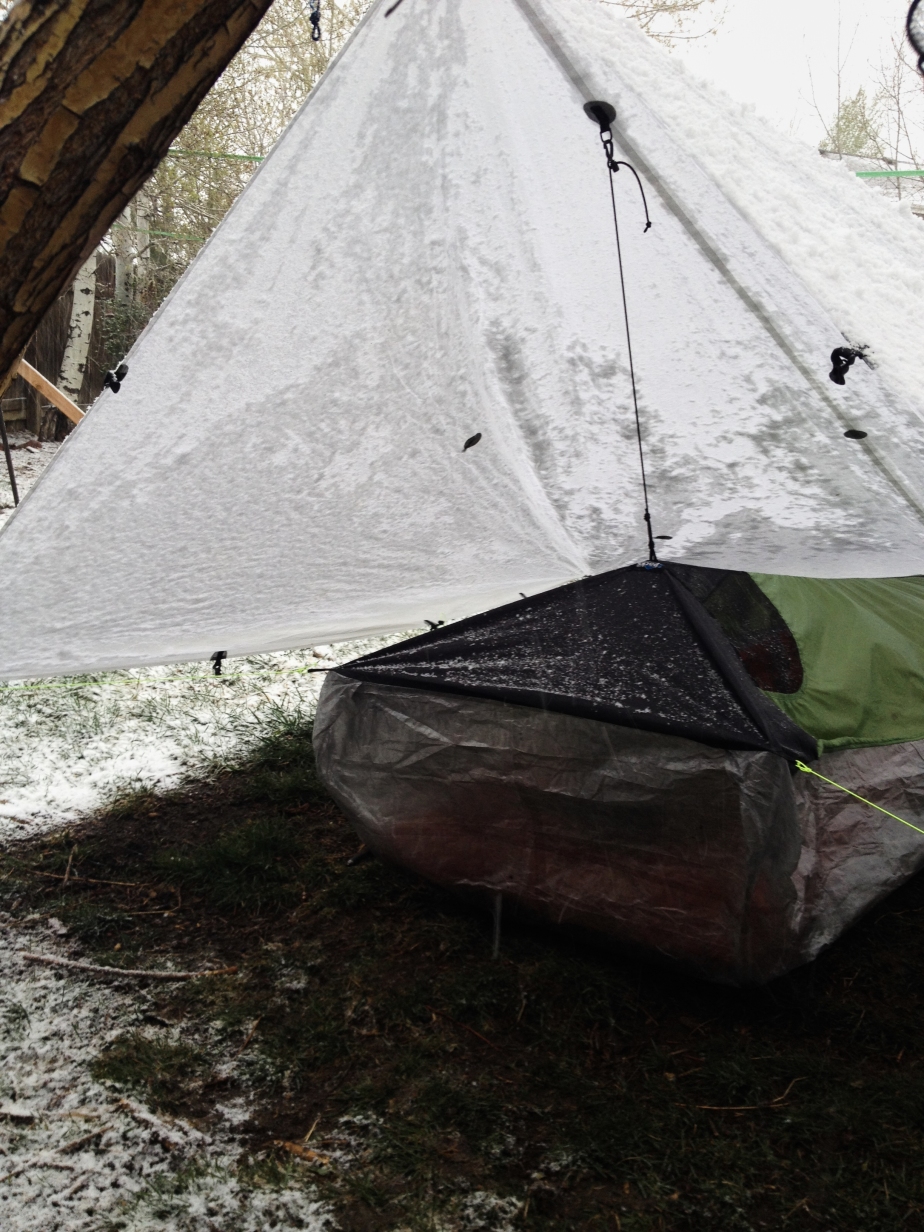
On the inside of the tarp (the side with the tag and without the webbing tie-outs), there are two reenforced points with tiny plastic D-Rings. These are great for fastening a clothes line or a spot to tie on a headlamp. I use them to hook the head of my ZPacks Splash Bivy to keep the mesh off my face as well as a point for my trekking pole in certain shelter set-ups. So far, it has been durable enough to lock in the point of my poles and not tear through, even being such a sharp, finite point. I don’t recommend doing this, though, I have my doubts in violent winds or heavy precipitation; or if you hit the pole or the shelter the wrong way. I don’t think it was designed for that. However, for attaching things, it does its job and it does it well.
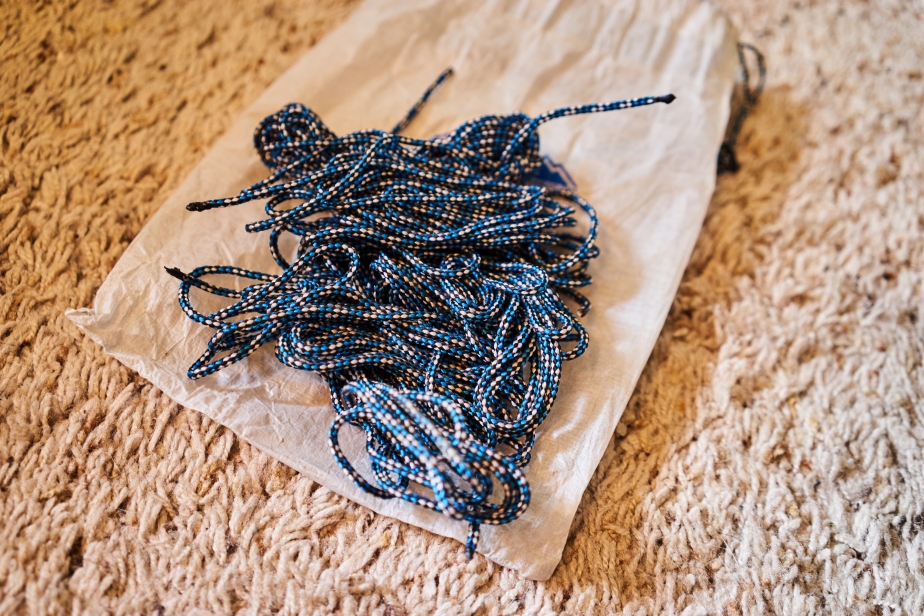
The tarp comes with 2.8mm UHMWPE (Spectra) line. This stuff is great. I put it on my Porter 3400, have it in my truck for who knows what, and use it with all of my shelters. This line dries out quickly, hasn’t been affected by tree sap, is very resistant to abrasion, and doesn’t kink unless you’re really trying. Adjusting length is easy and it slides through and grips the toggles well. This line is also easy to cut (with a little effort and scissors, not by sharp, natural abrasion) and burns nicely, making the ends malleable and narrow. Compared to the 1.4mm, it is also significantly easier when tying and untying knots, especially when wet and cold. When it comes down to the weight, it’s light and unless you’re putting it on a scale, you won’t notice the difference between the 1.4mm and the 2.8mm in your pack. For me, the ease of use is more important than the hard weight.
Packability and Storage
When packed, this thing is small, and with all the lines and extras, is right around the size of a one liter Nalgene. You can easily squeeze it into any area of your pack. You could probably fit it in a large jacket pocket; you wouldn’t be comfortable, but you could do it.

I’ve found it best to fold it length-wise until it is about ten inches in width, then roll it up. I’ve also folded it like a blanket, but that takes up more volume in my pack than rolling, so I usually just refrain from the latter unless I’m in a hurry to go. That brings me to one really great aspect of this tarp—it can be packed wet. I’m not sure if HMG recommends this, but I have found no issues in two years of use. The material does not absorb water and doesn’t rot out or facilitate mildew growth like silnylon tarps. I’m not saying that you should leave this thing packed wet for extended periods of time or submerged, however. To give you an idea, I’ve left it in my pack after rain storms for a day or two in its DCF stuff sack and it dried out quickly (indoors) and did not have any noticeable odor. Basically, when I camp in the wet with my silnylon tents, it’s always in the back of my head that they are going to need to dry out at some point; I’m hoping for some sunlight or some decent breezes before the sun sets—with this tarp I do not have that worry. I know I will be able to unpack it, wipe off the moisture with a PackTowl and be fine.
Versatility
There are almost endless options for set up with this tarp. Your imagination really is the limit. I’ve set this tarp up in some pretty weird ways with lots of rookie mistakes when I first made my transition into the world of tarps and it has continues to hold up well. I’m talking sticking trekking pole tips in and around the D-Rings, having way too much tension in the lines, tying the lines through the webbing of the tie-outs rather than the toggles, etc.

I’ve made pyramid shapes, the standard A-Frame and storm setups, as well as hung line from tree branches. You think it, this tarp can probably do it, within realistic limits. If you ever have a lack of ideas for a setup, there are a million tutorials and diagrams out there. If you need to get creative, this tarp allows a lot of freedom for you to adapt to your surroundings. It has a variable footprint size as well; when set up almost flat, two 6’0 people could sleep comfortably with a dog or two between, and still have space from the edges of the tarp. When pitched lower for nasty weather, things get a little more snug. For me, it’s still more comfortable than being crammed in a stuffy ultralight tent. It breathes much better, too.
Durability
HMG has gained a solid reputation for not producing crap. This tarp follows that trend. The seams are all intact, just a little dirty along the edges. Water and snow still slide right off of the fabric. Tie-outs have not broken. The stitching is still in place and is not fraying. It still rolls, folds, etc. just like it did on day one. This is a well-made product and as long as you take some kind of care of it, you will be fine in the long-term.
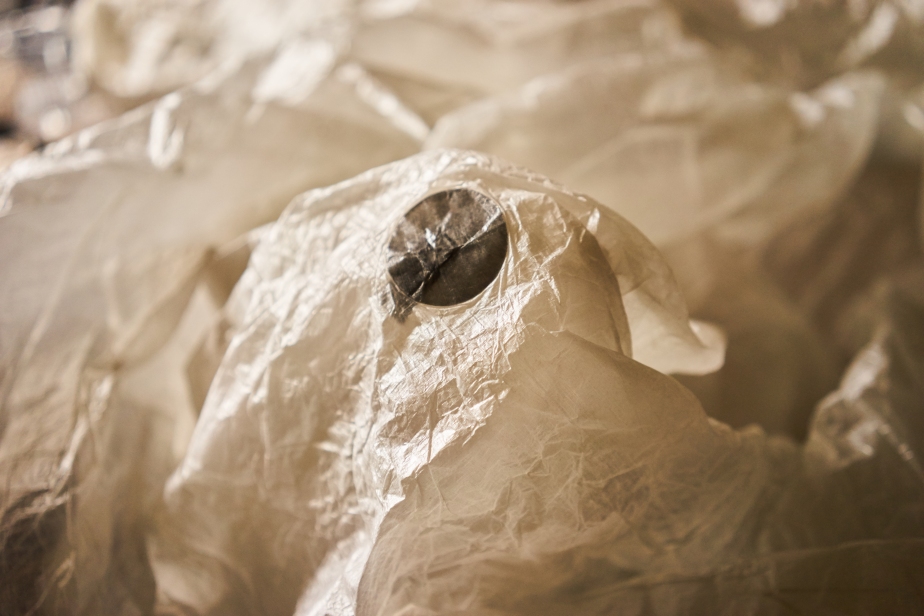
There are three areas I would like to address, though. One of the glued/welded/laminated reinforcement patches I mentioned earlier peeled up a little; it’s not much, but it’s not nothing. I think this happened when I tightened the lines too much during a windy storm, gust-by-gust pulling the pieces a part.

The other thing I want to address concerns the durability of the fabric. It’s strong, but you do have to be kind of careful with it. I’m not sure how I managed to scrape (not exactly a tear, but almost) the fabric or what it was on, but last summer I noticed a spot that looked like a soon-to-be rip. For the sake of not ruining my tarp, I won’t do the crampon test (mostly because I think a crampon is what caused it)—it’s just too thin and not exactly designed to resist impaling. If you walk on it or it grinds up agains some dirt and rocks and twigs, you should be fine as long as it’s minimal. If you’re grinding it on granite or setting rocks on top of the corners, it will resist some of the abrasion, but I would refrain from that as much as possible. It’s too light of a material to stand up to that kind of wear. The CF8 is thin; if it were the CF11 (found in grey HMG stuff sacks and packs and floors) it could take more of a beating. Be sure to check out the video at the bottom, I show a tear that happened while the tarp was pitched over a sharp rock as well as how to repair it.
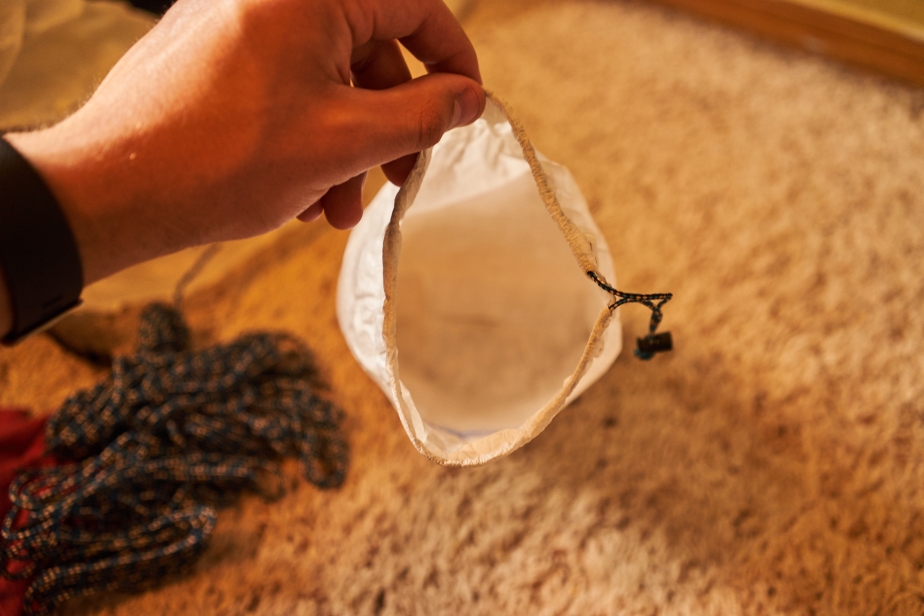
The same goes for the stuff sack it comes with. I’ve gotten a few small holes from stakes (those 6” Easton ultralight Full Metal Jacket ones). Even if you wear some holes or tears, they are ridiculously easy to repair with HMG’s repair kit, or for a better value, ZPacks’ cuben fiber tape. At the end of the day, this tarp is durable as long as you are reasonably mindful of caring for its placement and setup. Compared to most other tarps out there, even of the DCF variety, not much else feels or performs as solidly as this tarp.
Summary
Yep, it’s expensive. If you have the cash, or plan on investing in ultralight equipment this is a good direction to look. There are lighter tarps, but their fragility and thinness was a concern for me. Having used other HMG products, quality and longevity have not been issues and what issues have come in that area can generally be traced back to my rookie mistakes from early on. Has it been worth the money? Yeah, it’s like the Arc’teryx Alpha LT of tarps. It’s great for any condition, sheds moisture well, doesn’t weigh much or take up much space, and is just a smart purchase if you’re looking for a shelter to last you a decade plus. I’m firm in that, I think this tarp (and the rest of my HMG products) will hit the ten-year mark before retiring.
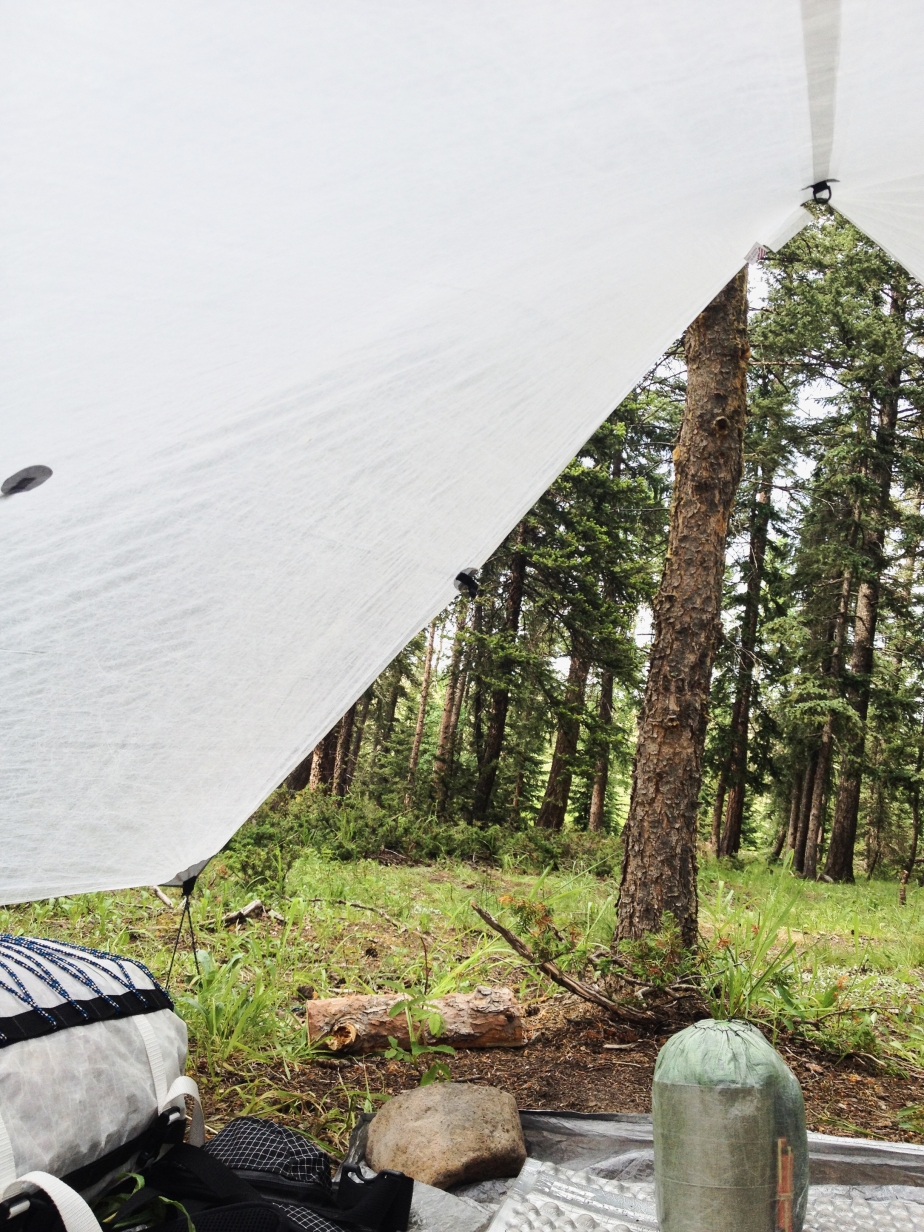
It isn’t the absolute lightest, but it is incredibly versatile, spacious, packable, long-lasting, well-made, easy to use, and looks great wherever you take it. Be sure to check out the video below. I talk about it some more, show you some different angles, and it’s just the polite thing to do. Thanks for reading!
